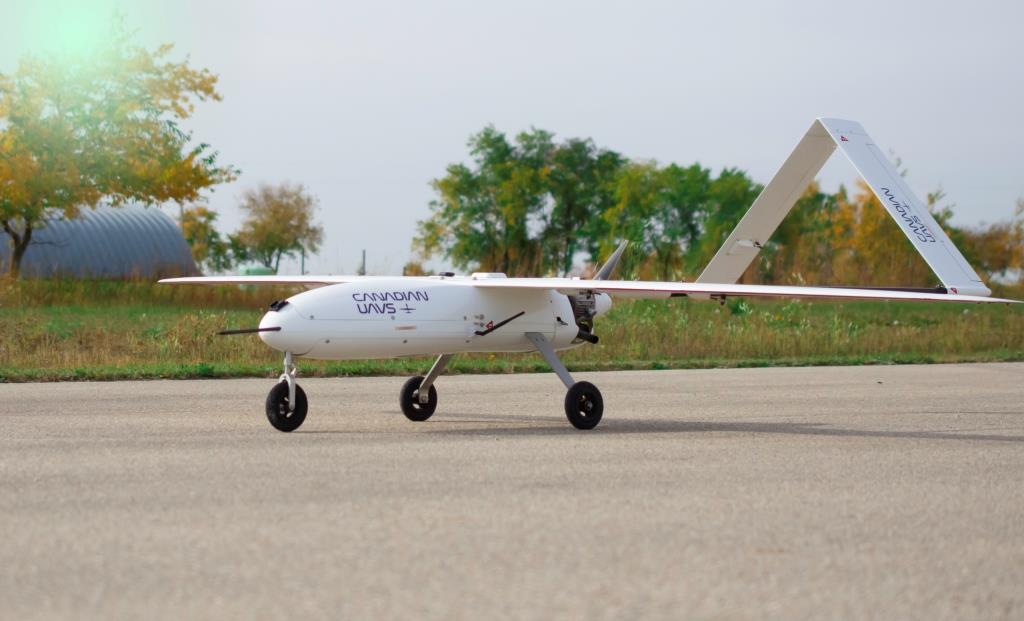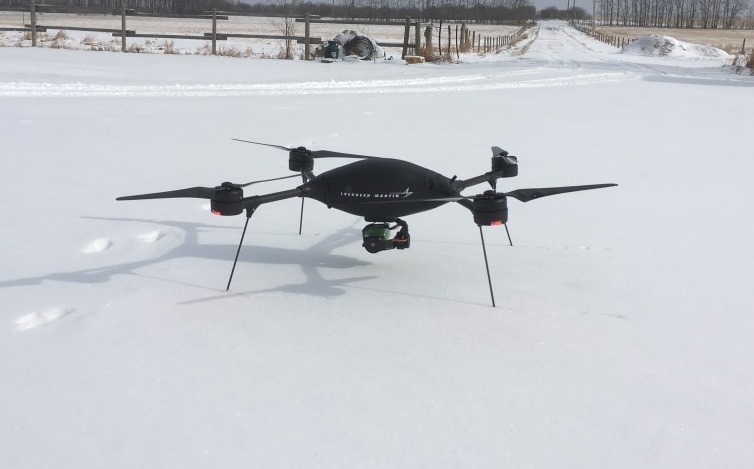UNMANNED SYSTEMS
BY JAMES CARELESS
Canadian UAVs
This Calgary based company uses Lockheed Martin’s military-grade Indago UAV to fly Beyond the Visual Line of Sight (BVLOS) missions for clients in the agricultural, energy and military sectors

In the defence sector, CUAVS has partnered with QinetiQ Target Systems, Leonardo Radar Campaigns, UMS Skeldar, and L3 WESCAM to provision the $51 million Intelligence, Surveillance, Target Acquisition and Reconnaissance (ISTAR) contract for the Royal Canadian Navy (RCN) and Canadian Special Operations Forces Command (CSOFC). The ISTAR contract will see remotely-piloted BVLOS Skeldar V-200 UAVs being operated from one or more RCN ships. For its part, CUAVS will provide pilots and UAV maintainers on these ships, plus provide training and consulting services for the ISTAR program.
Collectively, these are massive achievements for a small Calgary-based company of about 25 people. But in speaking with CUAVS President/CEO Sean Greenwood, CDR learned these are not the only wins that CUAVS has been enjoying as of late.
CDR: You’ve had a number of significant business successes recently. How have they affected Canadian UAVs; both in terms of your operations and your strategies?
Greenwood: We've grown significantly in the last year-and-a-half as a result of these successes. Right now, we're really just trying to mature and commercialize our technical and regulatory abilities to develop and drive value to our clients in both military and commercial markets.
CDR: We hear that CUAVS has just had another BVLOS win. Can you tell us a little more about this?
Greenwood: Yes. We’ve started a project to do low-cost oil sands project monitoring in civilian airspace. We use marine-grade radar and we apply a lot of computer vision and analytics, as well as situational awareness structures that we've generated out of our military operations.
About two months ago, we were approved by Transport Canada to do regular commercial UAV flight operations up in the oil sands region using the Indago 3 Lockheed Martin platform. We're finalizing some of our conditions right now and are rolling that service out to the oil sands region this fall.
This is really the first-of-its-kind UAV remote inspection/surveillance project. It's basically a holistic oil field data acquisition system. During our Indago 3 UAV flights to facilities in the oil sands, we can acquire real time and historical information to help our clients reduce costs, increase environmental integrity and improve asset monitoring.
It's really exciting, and we already have commitments for next year to do even bigger programs with even bigger aerial vehicles.
CDR: How has CUAVS’ experience in the civilian sector prepared you to support military clients on projects such as ISTAR?
Greenwood: Within the civilian market, we've had to progress from the smaller UAV class to the larger UAVs that we see being used by the military. Fortunately, having experience in both markets has enabled us to provide best-of-breed solutions using the best people to deliver a very safe and repeatable product. It helps that we use the Lockheed Martin Indago platform, which is military-grade rugged and reliable.
Winning the BVLOS authority from Transport Canada was a huge milestone for us and the industry as a whole. It also helps define where the regulations can go for DND operations as well.
CDR: Is winning BVLOS approval a competitive advantage for CUAVS?
Greenwood: Yes. This is because we compete against satellite imagery, ground-based observation, and traditional manned aviation.
By winning permission to fly BVLOS UAV missions, our cost per metre inspected or square kilometre inspected is now a fraction of what it used to be and cheaper than the alternatives. By getting that cost base down for acquiring imagery, we are able to capture more imagery for our clients at the same price or less, while increasing the intelligibility and quality of what we're observing.
This enables us to be a three-dimensional scanner of industrial sites or military theatres, with a level of safety that enables operations in any class of airspace with any class of population density. It’s a very big win.
CDR: What does this success mean for CUAVS’ military customers?
Greenwood: Upcoming DND projects such as RPAS (Remotely Piloted Aircraft Systems) and even FaCT (Future Air Crew Training) are going to have substantial components associated with BVLOS. You're going to have unmanned military systems passing through islands of civilian airspace to reach restricted military airspace, and to fly missions associated with Arctic sovereignty.
Our current BVLOS permit with Transport Canada fits very well with these requirements, especially when it comes to providing a pathway for larger and longer distance military UAV operations. Moreover, our ability to fly in both kinds of airspace safely provides the kind of operational and economic value that DND and the Canadian taxpayer are looking for.
CDR: You’re also working in Project SkySensus, an R&D project sponsored by Peraton Canada under its ITB commitment to integrate BLVOS flights into Canadian airspace in general. How is that effort going?
Greenwood: Project SkySensus is progressing well. It is producing greater contextual knowledge about airworthiness for the RPAS community as well as data analytics; including payload considerations and how you provide value to customers.
SkySensus has another five years to go, and there’s a lot of good results that I foresee coming out of this project.
CDR: While all of this has been going on, Canadian UAVs has been dealing with COVID-19. How have you been coping with the pandemic, and what impact has it had on CUAVS?
Greenwood: There’s been a lot of challenges associated with COVID-19; such as trying to get our people deployed to locations where they are needed. We deal with international markets so, moving personnel and equipment around has been difficult.
This said, the pandemic has presented opportunities as well. There are operations that would have been done traditionally by having people go to sites, such as inspections. Clients now recognize that you can send a UAV to go to do some of that work, thereby not risking personnel by interacting with people on site and increasing the risk of contracting COVID-19; that kind of thing.
At the same time, the pandemic has required CUAVS to hone in on what we are best at and what we want to work on; to be more calculating in what we want to provide and what we do best.
One thing is certain: 2020 has been a challenge and we're definitely looking forward to 2021 as everyone else is. Nevertheless, we're still growing and gaining experience right now, so it’s all good.
To learn out more about Canadian UAVs and their BVLOS UAV capabilities, go to www.canadianuavs.com
CDR: Thank you.
James Careless is CDR’s Ottawa Bureau Chief


